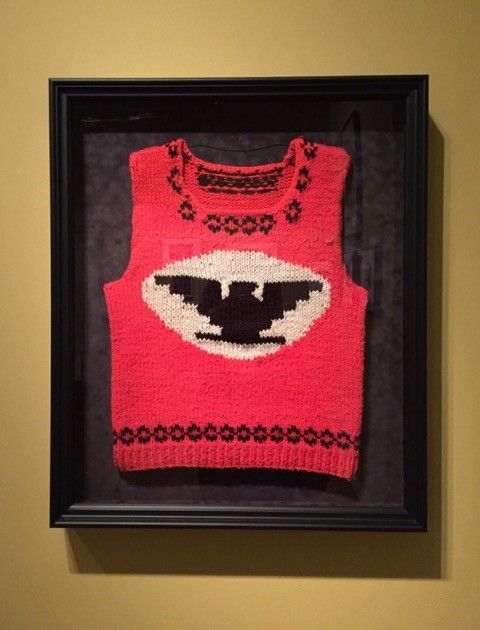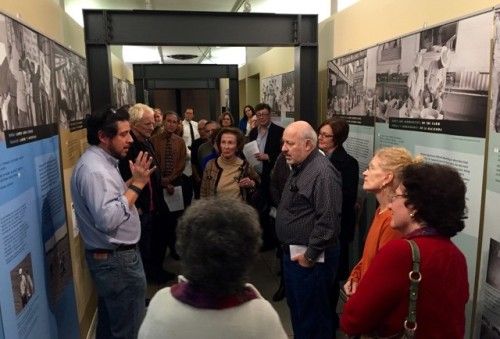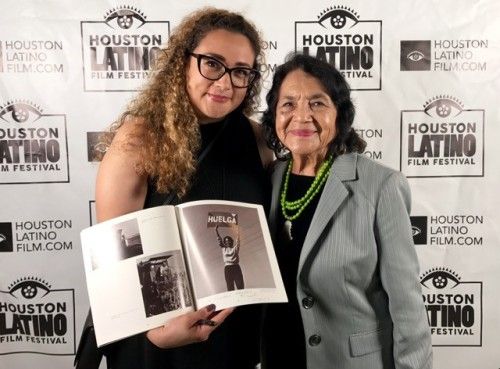NATIONAL MUSEUM OF THE AMERICAN LATINO
Michelle Tovar Works to Incorporate Local Narratives in the Telling of Bracero Program History
/https://tf-cmsv2-smithsonianmag-media.s3.amazonaws.com/blogging/featured/tumblr_inline_or8n2lqwsG1ryy7f0_500.jpg)
I cannot express how influential the Latino Museum Studies Program has been in my life since my participation in the Summer of 2015. This was a time of transition and change in my professional life. Prior to becoming a Latino Museum Studies fellow for the Smithsonian Latino Center, I had accepted a new position at Holocaust Museum Houston as Associate Director of Education Spanish Outreach and Latin American Initiatives. Audience engagement and public programming were the main components of my role at the museum. I took this into consideration when choosing my practicum during the five-week long fellowship. Being new to the museum world, I chose a department that would develop my skills as a researcher and as an educator.
My experience during the fellowship was empowering and eye-opening, especially when coming from a background in Education and Labor History. I was ecstatic when I learned that we were going to view the One Life: Dolores Huerta exhibition at the National Portrait Gallery and have a behind the scenes view of how the exhibit had been curated. It was a privilege to be so close to the objects that had been only been images in a book or film to me. This was one of the experiences prior to beginning my LMSP practicum that motivated me to learn more about inclusive exhibitions in institutions.

Working with my mentor, Maria de Carmen Cossu, Project Director for Latino Initiatives at the Smithsonian Institution Traveling Exhibition Services (SITES), was engaging and incredibly insightful. Not only did I learn the ins and outs of SITES project development, but it was amazing to connect with a fellow Latina and learn about Maria’s Peruvian background and history at the Smithsonian. Her practice in museum studies and research provided me with the knowledge I needed during the practicum. My work focused on the traveling exhibition, Bittersweet Harvest: The Bracero Program 1942-1965, in which I worked with institutions across the country to learn about how they had engaged with their communities. In my study, I learned about the impact of the bilingual texted exhibits on audiences and how public programming was essential in creating opportunities for engagement.

Bittersweet Harvest: The Bracero Program 1942-1965 became the main project of my work at SITES and I was able to learn, with Maria’s guidance along with Josette Cole and Katherine Krile, what SITES entailed. Upon returning to Houston, Texas, I decided that Bittersweet Harvest needed to be held at Holocaust Museum Houston. Maria and her team made it possible and in December 2016 we displayed our first bilingual Spanish/English exhibition at Holocaust Museum Houston. This exhibition provided me with the opportunity to create inclusive public programming that focused on Latino/a History and Labor History in the United States. Scholars such as NMAH Associate Curator Stephen Velasquez, Dr. David Romo, Dr. Lori Flores, and LMSP alumna and NMAH Curator Dr. Mireya Loza, provided a new lens in history for our Houston audience. The exhibition was able to reach 19,900 students during school tours and the 7 public programs brought in as many as 400 attendees in the 5 months that we had the exhibit on display.
What I appreciated the most was the feedback we received from our guests:
“This is a part of history that I had never been exposed to in my 41 years of life as a Texan. Thanks for working to share it.”
“Please bring more of this history to Houston, Texas. Never forget our cultural and historical stories.”
These comments and the many other stories that we were able to collect in our local Bracero oral history project were examples of how important it is to create a space for cultural experience. Exhibitions that include narratives that reflect the community provide a space for inclusiveness that is beneficial to all.

Recently, I learned that SITES has been developing a traveling exhibition of the National Portrait Gallery’s One Life: Dolores Huerta exhibition and hope that it can be displayed at Holocaust Museum Houston in the future. I had the honor of meeting Dolores Huerta at the Second Annual Houston Latino Film Festival during a screening of the documentary film based on her, Dolores. In the brief moment I had with her, I mentioned my LMSP experience and praised her efforts in bringing the Latinx experience to the Smithsonian. I am forever grateful to everyone at the Smithsonian Latino Center for providing us with once in a lifetime opportunities and for the bonds that were created during the fellowship.
Follow the #LMSP Fellows via instagram @smithsonian_lmsp @slc_latino, the Smithsonian Latino Center Facebook page or via twitter @SLC_Latino.
